Saddle corydoras - Corydoras ephippifer
Scientific name: Corydoras ephippifer
Common name: Saddle corydoras
Family: Callichthyidae
Usual size in fish tanks: 5 - 6 cm (1.97 - 2.36 inch)
014
Recommended pH range: 6.4 - 7.2
Recommended water hardness: 3 - 21°N (53.57 - 375ppm)
0°C 32°F30°C 86°F
Recommended temperature range: 22 - 27 °C (71.6 - 80.6°F)
The way how these fish reproduce: Spawning
Where the species comes from: South America
Temperament to its own species: peaceful
Temperament toward other fish species: peaceful
Usual place in the tank: Bottom levels
Food and Feeding
The Saddle Corydoras (Corydoras ephippifer) thrives on a varied diet. Provide high-quality flake food, sinking pellets, or algae wafers as their staple diet. Twice a week, supplement their meals with live or frozen treats such as brine shrimp and bloodworms to ensure balanced nutrition. As these fish are most active during the evening, feeding them at this time allows them to access food without competition from faster tankmates.
Origin
The Saddle Corydoras is native to South America, specifically the waterways of Brazil. These habitats feature soft, slightly acidic to neutral water with sandy or fine gravel substrates. The rivers are often slow-moving and densely vegetated, providing plenty of shelter and foraging opportunities. Common plants in their natural habitat include species of Echinodorus and floating plants that help diffuse light. Replicating these conditions in an aquarium supports their natural behaviors and ensures their well-being.
Sexing
Sexing Corydoras ephippifer is easiest when viewing them from above. Females are slightly larger and have a rounder, plumper body shape compared to the slimmer males. These differences become more noticeable during the breeding season.
Breeding
There are no documented cases of Corydoras ephippifer breeding in captivity. However, it is believed that they follow the same spawning habits as other Corydoras species. In the wild, females typically lay adhesive eggs on flat surfaces such as leaves, tank walls, or substrate, which are then fertilized by males. To encourage breeding in aquariums, maintain pristine water conditions, slightly cooler water temperatures, and provide plenty of smooth surfaces or plants like Echinodorus bleheri or Echinodorus major for egg deposition. Feed fry with infusoria or finely crushed flakes once hatched.
Lifespan
With proper care, the Saddle Corydoras can live 3-5 years. Stable water conditions, a nutritious diet, and a stress-free environment are key to ensuring their longevity.
Tank Setup
To create an ideal habitat for Saddle Corydoras, set up a well-planted aquarium with a minimum size of 60 liters (~16 gallons). Use a soft, sandy substrate or fine, rounded gravel to protect their delicate barbels. Include plenty of hiding spots with rocks, driftwood, and live plants like Anubias, Java Fern, Amazon Swords, and Vallisneria spiralis. Floating plants such as Salvinia or Frogbit can help diffuse light and create a more natural environment. Maintain water parameters within their ideal range: pH 6.4-7.2, hardness 3-21°N (53.57-375 ppm), and temperature 22-27°C (71.6-80.6°F). Gentle water flow and regular water changes are essential to keep the environment clean and oxygenated.
Compatible Tankmates
The peaceful nature of Saddle Corydoras makes them an excellent addition to community aquariums. Suitable tankmates include Neon Tetras, Harlequin Rasboras, Ember Tetras, Otocinclus Catfish, and Angelfish. Other peaceful South American species such as Rummy Nose Tetras and Cardinal Tetras are also excellent companions. Avoid housing them with aggressive or territorial species that may stress or harm them. Keeping them in groups of at least six individuals enhances their social behavior and overall health.
Short Description
The Saddle Corydoras (Corydoras ephippifer) is a peaceful, bottom-dwelling species that thrives in well-planted aquariums with plenty of hiding spots. Their gentle temperament and manageable size make them an excellent choice for community tanks with similarly peaceful fish. Proper care, including a soft substrate and high water quality, ensures these charming fish remain healthy and active in their environment.
Pictures
Bought by aqua-fish.net from jjphoto.dk.



 Aspidoras
Aspidoras  Giant
Giant  Hognosed
Hognosed  Emerald
Emerald  Cascarudo
Cascarudo  Acre
Acre  Adolfo’s
Adolfo’s  Bronze
Bronze 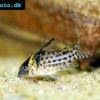 Agassizii’s
Agassizii’s  Spotted
Spotted  Skunk
Skunk  Corydoras
Corydoras 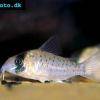 Fairy
Fairy  Corydoras
Corydoras  Pink
Pink 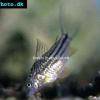 San
San  Bond’s
Bond’s  Spotted
Spotted  Tailspot
Tailspot  Concolor
Concolor  Cope’s
Cope’s 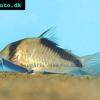 Sand’s
Sand’s  False
False  False
False 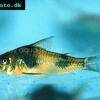 Ehrhardt’s
Ehrhardt’s  Elegant
Elegant  Fowler’s
Fowler’s  Gomezi
Gomezi 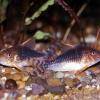 Palespotted
Palespotted 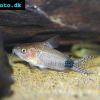 Guapore
Guapore  Dainty
Dainty  Mosaic
Mosaic  Imitator
Imitator  Julii
Julii  Leopard
Leopard 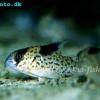 Black
Black  Slant-bar
Slant-bar  Bluespotted
Bluespotted  False
False  Bandit
Bandit  Mini
Mini 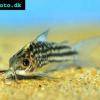 Napo
Napo  Corydoras
Corydoras 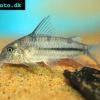 Blue
Blue  Nijssen’s
Nijssen’s 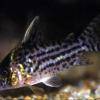 Ornate
Ornate  Peppered
Peppered  Panda
Panda  Albertini
Albertini  Pastaza
Pastaza  Corydoras
Corydoras  Many-spotted
Many-spotted  Pretty
Pretty  Dwarf
Dwarf  Iridescent
Iridescent  Reticulated
Reticulated 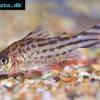 Bannertail
Bannertail  Robust
Robust  Schwartz’s
Schwartz’s  Black
Black 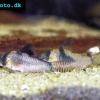 Longnosed
Longnosed  Seuss’
Seuss’  Smudge
Smudge  Masquerade
Masquerade 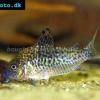 False
False  Millenium
Millenium  Pinkthroat
Pinkthroat  Sterba’s
Sterba’s  Longsnout
Longsnout  False
False  Miguelito
Miguelito 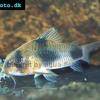 Twosaddle
Twosaddle  Xingu
Xingu 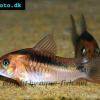 Black
Black  Porthole
Porthole  Flagtail
Flagtail  Brown
Brown  Spotted
Spotted